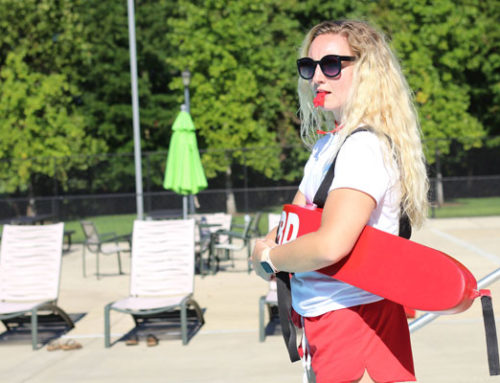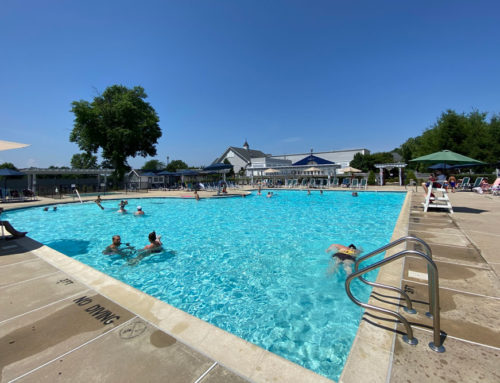Each May our nation recognizes the importance of understanding the dangers of swimming and the precautions needed to protect yourself. Swimming is a refreshing and exhilarating form of exercise, an aerobic activity that can increase endurance, decrease the risk of chronic illness, improve function for those with arthritis, and many other benefits. It is also a long loved activity, with community pools all across the country welcoming swimmers for some exercise and time with friends, along with residential pools for families to make lasting memories in.
However, with this joy comes real responsibility. The responsibility that we will teach our children and ourselves to respect all bodies of water, and learn the skills to be safe in it. Sadly, every day about ten people die from unintentional drowning, with many of these tragedies occurring due to a lack of swimming ability. Our mission is to make sure everyone has the knowledge they need to be safe in the water. All month we will be adding to this blog with tips to help you manage your family’s safety and enjoy the pool for another swim season.
The Buddy System
Bringing a friend with you to swim is not just a fun idea, it’s a smart idea! The buddy system means that you always have someone with you when you’re swimming. This person does not have to swim, but just keep an eye out in case you were to have an emergency and need help while in the water. If you are at a pool with a lifeguard, be aware that they are monitoring many people at once and to think of your buddy as backup. They can immediately alert the lifeguard if you are in an emergency situation so they can act quickly.
The buddy system is great for all ages, every swimmer should be aware that an emergency can happen while they are swimming no matter their skill level and having someone nearby to assist you is the best way to prevent injury. Just remember that the buddy system works both ways — if you have a friend watching your back, you should be watching their back too!
Infant Swim Lessons
Contrary to what some may believe, infants as young as four months old can be enrolled in early swim lessons. There are many schools popping up around the country that offer these infant swim lessons as a way to teach basic swim and safety skills in a child friendly environment with heated pools, interactive lesson plans, and colorful designs.
As stated above, the CDC listed lack of swimming ability as the top reason for unintentional drownings. Starting your child in swimming lessons at a young age could very well save their life! We recommend doing some research on the local swim schools near you and finding which lesson plan works best for your infant and family. These lessons will provide safety skills your child will benefit from for life, along with creating fun family memories for all to share.
Install a Fence or Barrier
Just as important as a baby gate on the stairs, installing a fence or barrier around your pool will greatly decrease your children’s risk of injury. In fact, the CDC says that residential homes with 4-sided pool barriers reduces a child’s risk of drowning by 83% compared to homes with open access to the pool. Young children who have not developed the water safety skills necessary to stay safe in the water won’t have access to the pool while there is no proper supervision. The installed fence or barrier should be at least four feet high with self-closing and self-latching gates that open outwards with latches out of reach of small children. You can also choose to install an alarm on your gate’s door to alert you if it is opened.
It’s important that you check with your local professional regarding correct installation, as any faults could alter its effectiveness. This fence will not only help children stay safe, but it will also help prevent wildlife from entering the pool and possibly causing damage. Your local American Pool office is always open and available to discuss a new fence or barrier for your pool, contact us with your questions or concerns today!
Avoid Distractions
As technology becomes more and more integrated into our everyday lives, now is a good time to remind yourself just how distracting all of it can be. In 2015, a mother in Texas suffered a tragedy no mother should, sadly because she was distracted by her phone. We know that constant and vigilant supervision is one of the best ways to prevent a tragedy like this. The signs of a struggling swimmer are usually silent and can go unnoticed by those distracted on their phones or other handheld technology. If you are the supervisor, there is no off time!
We recommend turning off all mobile phones that could cause any unwanted distractions, even a quick two minute phone could potentially cause irreversible damage. Make sure to also lower or pause music playing from speakers, to be able to hear the swimmer as much as possible. If you must leave the pool deck, bring the swimmer with you. Never step away “for just a second,” as so much can happen in a second! As a supervisor, you have an important job to prevent any water injuries from happening, don’t let any distractions stop you from doing the best job you can!
Know your PFDs
A PFD, or Personal Flotation Device, is a great way to help keep water accidents at bay. While a properly tested U.S. Coast Guard approved PFD will provide support for swimmers, they should never replace proper supervision. In our latest edition of the Aquatic Leader Magazine we go over the different types of PFDs and how each one is beneficial.
Many new updates have been made to PFDs over the years, no longer are blaze-orange lifejackets the only option. New PFDs sport more comfortable colors, along with popular television and comic book characters that children love. Remember, a PFD is the only approved swimming support by the U.S. Coast Guard and American Red Cross, and toys like rafts, inner tubes, and floaties, are never safe alternatives. To learn more about PFDs and finding the right one for you and your family, check out our Buyer’s Handbook: Personal Flotation Devices in the latest edition of our Aquatic Leader Magazine.
Respect the Water
It’s true, we love swimming more than the average Joe! For those who have pools in their own backyard, a daily dip in the water is a common and much welcome occurrence. However as stated above, with this luxury comes responsibility, a true respect for the water and what dangers can lurk within it.
Earlier this month we recommended checking out the website for National Water Safety Month, where they’ve put dozens of safety tips, provided material for professionals, advertised safety events, and much more. While the month of May is used as a month long platform to advocate for water safety, respecting the water and honing your safety skills is a year-round task. It is crucial that swimmers respect all bodies of water, from children’s splash pads to wide open oceans.
The World Health Organization discovered in 2015 that 26% of child drowning deaths in Bangladesh occurred in a ditch. Many parents and caretakers may not realize how much damage a small amount of water can do, and this is where the respect comes into play. Children can drown in as little as 2 inches of water, making seemingly harmless structures or fountains a hazard to children. No matter how much or how little, water can cause irreversible damage to those who may not know proper water safety technique. We believe it is important to have water safety emergency strategies and many talks about the dangers of water and what steps to take to prevent injury. With constant supervision and regular education, we know that swimming can be a safe and enjoyable experience for all. Share this blog with your family, friends, and neighbors to spread water safety knowledge and keep your loved ones safe!











